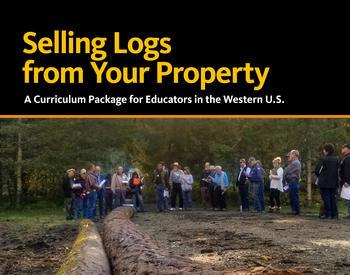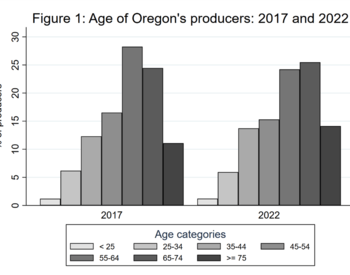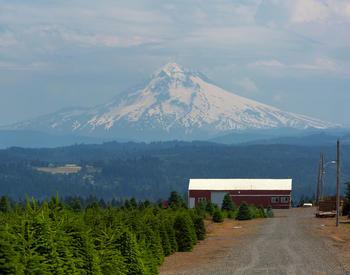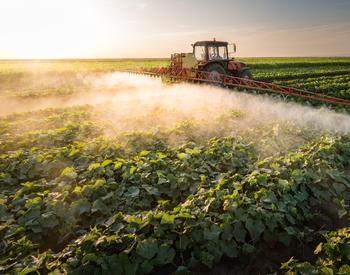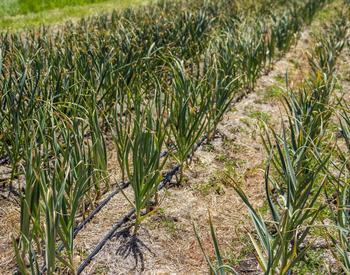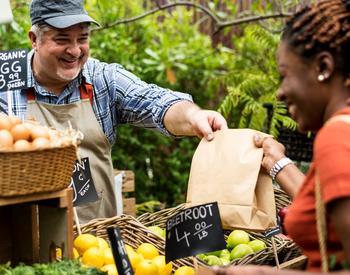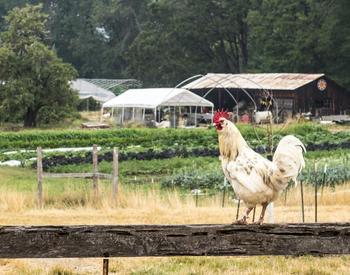In addition to being a fundamental input to agricultural production, farmland and other forms of farm real estate are the most important assets on the farm sector balance sheet. As part of the 2022 Census of Agriculture, producers are asked to estimate the value of their farm real estate, including land and farm-related buildings, if it were to be sold in a market transaction.
A unique aspect of the census data on farm real estate value is that it provides the only regularly updated source of county-level values for the United States. This article discusses what the census numbers tell us about the value of farm real estate in Oregon and how it has evolved since the previous census was taken in 2017.
State summary
The total estimated value of Oregon’s farm real estate increased $10.7 billion between 2017 and 2022, representing an increase of over 23%. The gain in Oregon outpaced the 7% gain in total farm real estate value for the United States as a whole.
On a per-acre basis, Oregon’s farm real estate value increased from $2,870 to $3,693, a gain of almost 29%, which again, is considerably larger than the 9.5% increase throughout the United States.
The average farm in Oregon comprises real estate worth over $1.5 million, reflecting a 30.5% increase since 2017. This is more than double the 15% increase in per-farm real estate values for the United States.
| 2017 | 2022 | Change | % change | |
|---|---|---|---|---|
| Oregon total value ($billions) | 45.8 | 56.5 | 10.7 | 23.3 |
| US total value ($billions) | (3,160) | (3,385) | (225) | (7.1) |
| Oregon value per acre | 2,870 | 3,693 | 823 | 28.7 |
| US value per acre | (3,511) | (3,846) | (335) | (9.5) |
| Oregon value per farm | 1,218,105 | 1,589,147 | 371,042 | 30.5 |
| US value per farm | (1,547,555) | (1,781,284) | (233,729) | (15.1) |
Notes: All dollar values for 2017 are adjusted for inflation to the year 2022 using the Gross Domestic Product Implicit Price Deflator. Numbers in parentheses represent corresponding values for the US.
County summary
The most valuable farmland in Oregon is found in the Willamette Valley, as well as parts of Central and Southern Oregon. These regions correspond to where high-valued commodities are produced including vineyards, orchards and other specialty crops. In 2022, the counties with the highest per-acre values were Clackamas, Multnomah, Washington and Josephine, all of which had average values above $20,000 per acre.
Land in Eastern Oregon tends to be associated with lower values on a per-acre basis, but farms also tend to be much larger in that part of the state. Harney, Grant, Gilliam and Wheeler counties all had values below $1,400 per acre. However, some of the largest gains in value between 2017 and 2022 occurred in Eastern Oregon.
The biggest per-acre increases, in percentages, took place in Jefferson and Benton counties, where farm real estate rose in value by 80% and 70%, respectively. Wasco, Morrow, Lake and Crook counties all saw gains in excess of 60%. Only two counties, Josephine and Wallowa, experienced an inflation-adjusted loss in per-acre farm real estate value since 2017.
More about the data
Economists use the farm real estate value information provided by the census in a variety of research and outreach applications. A main appeal of these data is that they are available at the county level, which provides more detail than the typical land values data published by the U.S. Department of Agriculture. It is worth emphasizing, however, that these values don’t represent actual transaction prices, but rather producers’ perceptions of what their land would sell for in a market transaction. Nonetheless, they reveal important information about the value of farm real estate in Oregon, where farmland values have appreciated at rates that dramatically outpace the trends seen throughout the United States.




